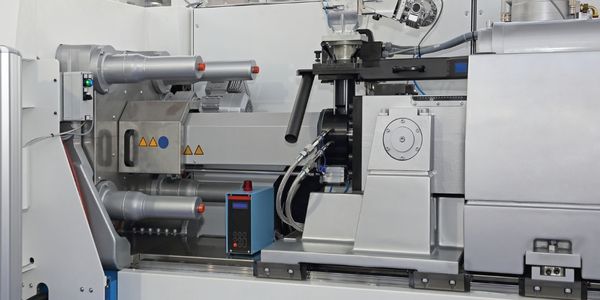Technology Category
- Sensors - Utility Meters
Applicable Industries
- Plastics
- Retail
Applicable Functions
- Sales & Marketing
Use Cases
- Intelligent Urban Water Supply Management
- Leakage & Flood Monitoring
About The Customer
The customer in this case study is BRITA, a well-known water filter company. BRITA has been a leader in the industry for many years, providing solutions for great tasting water without the need for single-use plastic bottles. The company is committed to sustainability and is constantly seeking ways to reduce the environmental impact of its products. BRITA is also dedicated to changing perceptions and educating consumers about the benefits of using filtered water over bottled water. The company operates in the UK, which boasts some of the best quality drinking water in the world.
The Challenge
BRITA, a renowned water filter company, was facing a challenge in changing its brand perception from being functional and outdated to relevant and engaging. The company wanted to highlight its sustainability benefits, especially in the context of the ongoing global plastic crisis. Despite the UK having some of the best quality drinking water in the world, consumers were still inclined towards bottled water, largely due to effective marketing campaigns. BRITA saw an opportunity to emphasize the absurdity of promoting a product that is so damaging to the environment. However, the company faced a lack of hard facts to support their stance and drive change.
The Solution
BRITA, in partnership with Iris, their lead UK PR, Social & Partnerships agency since 2012, embarked on a project to gather the necessary data to support their campaign. They collaborated with Retail Economics, who produced a whitepaper providing the key statistic for the campaign: 413 more plastic water bottles will be sold by 2026 due to marketing campaigns. This data was used to gain significant media coverage in The Guardian and The Times. To bring these facts to life, they recruited actor James Buckley for a spoof advertising campaign and radio ad, which helped to reach a wider audience. The campaign also involved social media community management, with participation kept at the heart of their strategy. They engaged social first comedian, Josh Berry, and other comedic influencers on TikTok and Instagram to create spoofing content that resonated with the target audience.
Operational Impact
Quantitative Benefit

Case Study missing?
Start adding your own!
Register with your work email and create a new case study profile for your business.
Related Case Studies.

Case Study
Plastic Spoons Case study: Injection Moulding
In order to meet customer expectations by supplying a wide variety of packaging units, from 36 to 1000 spoons per package, a new production and packaging line needed to be built. DeSter wanted to achieve higher production capacity, lower cycle time and a high degree of operator friendliness with this new production line.

Case Study
Improving Production Line Efficiency with Ethernet Micro RTU Controller
Moxa was asked to provide a connectivity solution for one of the world's leading cosmetics companies. This multinational corporation, with retail presence in 130 countries, 23 global braches, and over 66,000 employees, sought to improve the efficiency of their production process by migrating from manual monitoring to an automatic productivity monitoring system. The production line was being monitored by ABB Real-TPI, a factory information system that offers data collection and analysis to improve plant efficiency. Due to software limitations, the customer needed an OPC server and a corresponding I/O solution to collect data from additional sensor devices for the Real-TPI system. The goal is to enable the factory information system to more thoroughly collect data from every corner of the production line. This will improve its ability to measure Overall Equipment Effectiveness (OEE) and translate into increased production efficiencies. System Requirements • Instant status updates while still consuming minimal bandwidth to relieve strain on limited factory networks • Interoperable with ABB Real-TPI • Small form factor appropriate for deployment where space is scarce • Remote software management and configuration to simplify operations

Case Study
Digital Retail Security Solutions
Sennco wanted to help its retail customers increase sales and profits by developing an innovative alarm system as opposed to conventional connected alarms that are permanently tethered to display products. These traditional security systems were cumbersome and intrusive to the customer shopping experience. Additionally, they provided no useful data or analytics.

Case Study
How Sirqul’s IoT Platform is Crafting Carrefour’s New In-Store Experiences
Carrefour Taiwan’s goal is to be completely digital by end of 2018. Out-dated manual methods for analysis and assumptions limited Carrefour’s ability to change the customer experience and were void of real-time decision-making capabilities. Rather than relying solely on sales data, assumptions, and disparate systems, Carrefour Taiwan’s CEO led an initiative to find a connected IoT solution that could give the team the ability to make real-time changes and more informed decisions. Prior to implementing, Carrefour struggled to address their conversion rates and did not have the proper insights into the customer decision-making process nor how to make an immediate impact without losing customer confidence.

Case Study
Boiler Control System for Plastic Manufacturing Applications
Factory automation applications must be equipped to handle and monitor the myriads of information from attached devices. For plastic manufacturing applications, the boiler control system plays a critical role by gathering and regulating information to ensure production is accurate and smooth. In this particular case, the customer combines eight subsystems that include power meters, water meters, alarm output, displays, and I/O status to be controlled by several intelligent controllers with Modbus RTU interface. The Modbus TCP protocol is used for this application due to the distance. System Requirements: • Modbus serial to Modbus TCP translation • Multiple slaves/masters support • Automatic Modbus TCP response time detection








